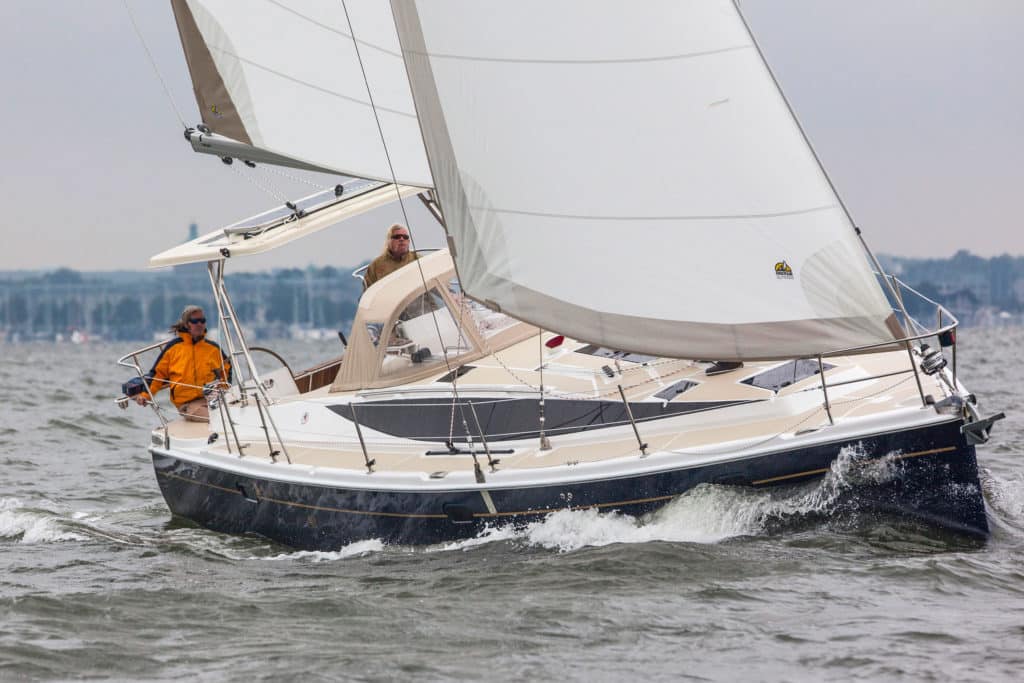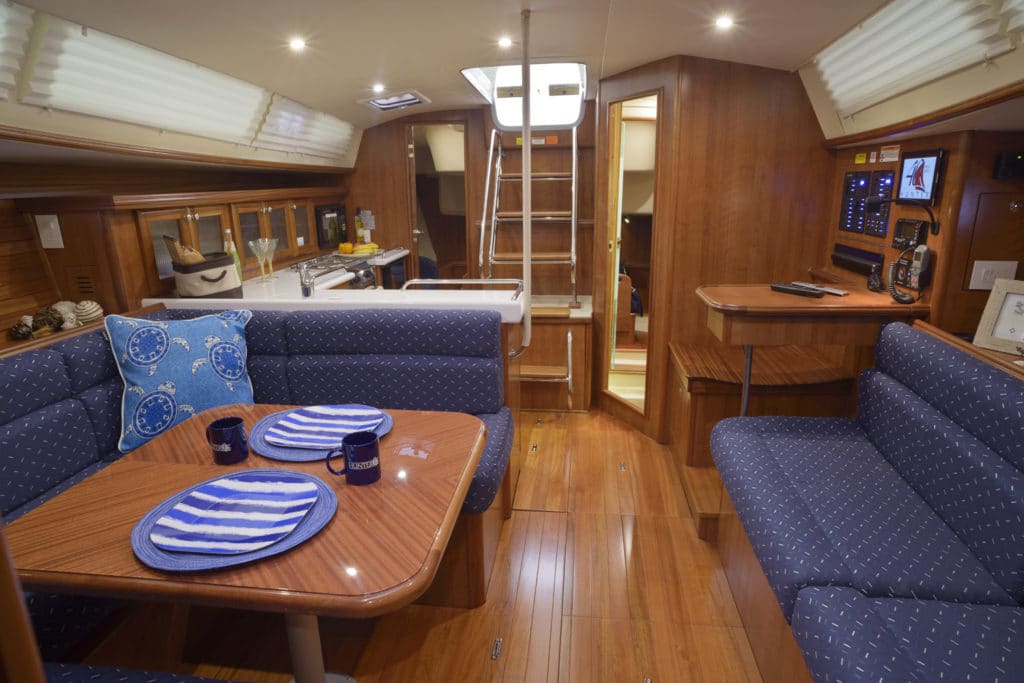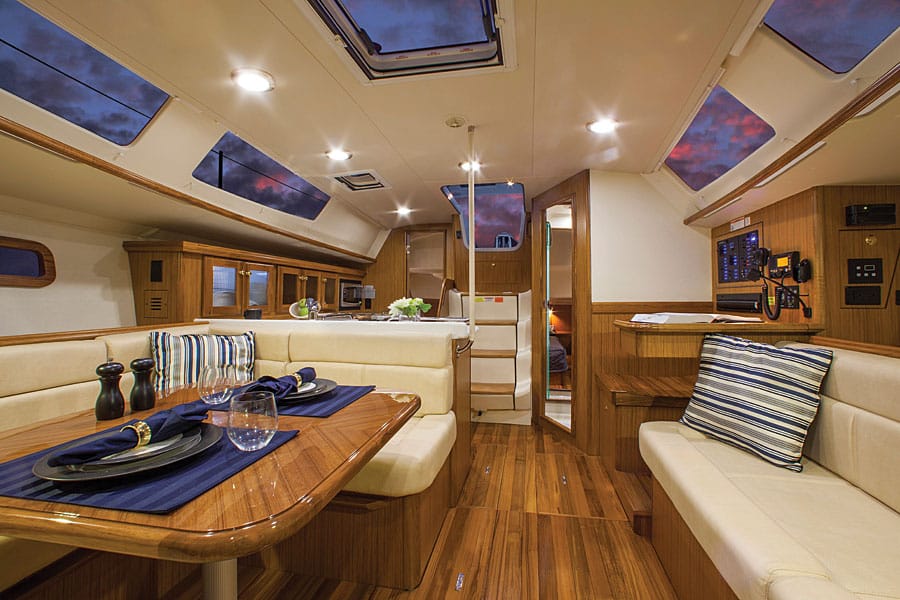
Hunter 40
When Hunter Marine arrived last fall at the U.S. Sailboat Show in Annapolis, Maryland, the company came with a new name, a new owner, and a new 40-foot sloop to celebrate 40 years of boatbuilding in the United States and a renewed lease on life.
Purchased by Marlow Yachts, based in Palmetto, Florida, in the middle of 2012, the sailboat company founded by Warren Luhrs is now called Marlow-Hunter but continues to produce its line of small trailerable sailboats and midsize to large cruising models at its yard in Alachua, Florida.
The Hunter 40 introduces an updated look to the Hunter lineup, and according to sales director Greg Emerson, more models with similar styling will follow. The boat was designed by Glenn Henderson, who’s long collaborated with the firm’s in-house designers, and with input from Marlow Yachts owner David Marlow, as well.

With its hard chines, a slightly reverse transom, and a plumb bow, the 40 has a sporty appearance, enhanced in the case of hull number 1 by its deep blue topsides, gold cove and boot stripes, and two-tone deck with tan nonskid and white gelcoat trim. Windows shaped like knife blades run the length of the wedge-shaped cabin top; I did a double take when I first spotted them on the boat sitting dockside at the show.
Belowdecks, the H40 has a quite roomy layout. White panels, offset by either mahogany (standard) or teak woodwork, give the interior, especially the saloon, an airy and bright feel. The boat I inspected came with the teak interior, an option package that also includes Dura-Leather upholstery and upgraded fixtures. With the upgrade, the owner also has the choice of a hard bimini over the cockpit, a feature with which our test boat was equipped. To be honest, unless I was in the tropics, I’d prefer either a canvas bimini or none at all, but perhaps that’s because I thought that the hardtop had head-knocking potential. Based on customer and dealer feedback, the layout in the forward cabin has been changed from the boat we sailed. A separate head and shower, located on either side of the cabin, have been combined to starboard,making room for a bench seat between the hanging locker to port and the queen-size V-berth.

Aft, a buyer has a choice of either two cabins or one large owners cabin; I saw the latter. Headroom over the island queen seemed cramped, and apparently others thought so, too. Emerson said the company has modified the cockpit-table base and the mold for the cockpit itself to gain more space below.
Emerson said that the original H40 transom has also been changed to make the fold-down swim platform smaller and lighter and, hence, easier to raise and lower. As a result, production models have a step on the stern to make boarding from a dinghy easier when the platform’s up. Like all modern Hunters, the H40 has a B&R rig with swept-back spreaders and no backstay. Customers can choose between a conventional mainsail or an in-mast furling main with vertical battens. The boat comes standard with a 110-percent headsail, although a 120-percent genoa can be ordered for light-wind cruising grounds, and the anchor roller includes a padeye for setting downwind sails. A traveler is incorporated into the stainless-steel cockpit arch; it can be adapted to include either a canvas or hard bimini. One end of the double-ended mainsheet is led to the cabin top, and the other down the side of the arch to a winch by the port helm station. This arrangement makes a boat the size of the 40 quite easy for a couple to sail.
Speaking of sailing, the 40 delivered a comfortable ride during my somewhat short time on the wheel in conditions that favored foul-weather gear. The Lewmar steering provided good feedback as we notched closehauled speeds in the 6s and a knot better when we cracked off to a reach in 10 knots of breeze.
Given the one-year stem-to-stern warranty and five-year guarantee on the hull—not to mention the long list of standard equipment—the sailaway price of $240,000 makes the Hunter 40 definitely worthy of inspection or, better yet, a test sail.








